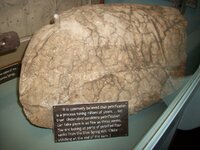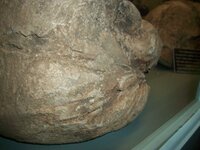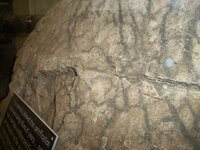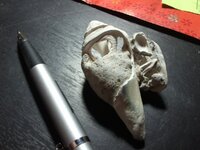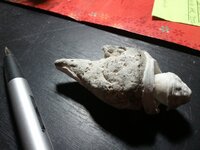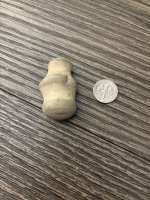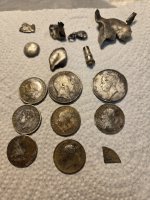bbbaldie
Jr. Member
This may boggle your mind, I brought it up over at Fossil Forum a couple years ago, I was told it was impossible.
There's a place near Eureka Springs, AR called Blue Spring. It had an old grist mill there. http://www.bluespringheritage.com/history_mill.shtml
Anyhoo, found buried in the creek gravel were FOSSILIZED bags of flour! I'm talking solid calcium carbonate.
Amazing, huh? I raised the issue at FF with a respectful question: since this CAN happen, how sure can we be that fossil bones found in, say a creekbed might not be ancient. No young earth theorizing here, just how do you know that it might not be from the 19th century, like these flour bags, instead of the pleistocene era?
Basically, I was told that the fossilized bags of flour were impossible, that a thin veneer of rock might have formed on them.
So here are the pics (attached). What do y'all think?
There's a place near Eureka Springs, AR called Blue Spring. It had an old grist mill there. http://www.bluespringheritage.com/history_mill.shtml
Anyhoo, found buried in the creek gravel were FOSSILIZED bags of flour! I'm talking solid calcium carbonate.
Amazing, huh? I raised the issue at FF with a respectful question: since this CAN happen, how sure can we be that fossil bones found in, say a creekbed might not be ancient. No young earth theorizing here, just how do you know that it might not be from the 19th century, like these flour bags, instead of the pleistocene era?
Basically, I was told that the fossilized bags of flour were impossible, that a thin veneer of rock might have formed on them.
So here are the pics (attached). What do y'all think?


